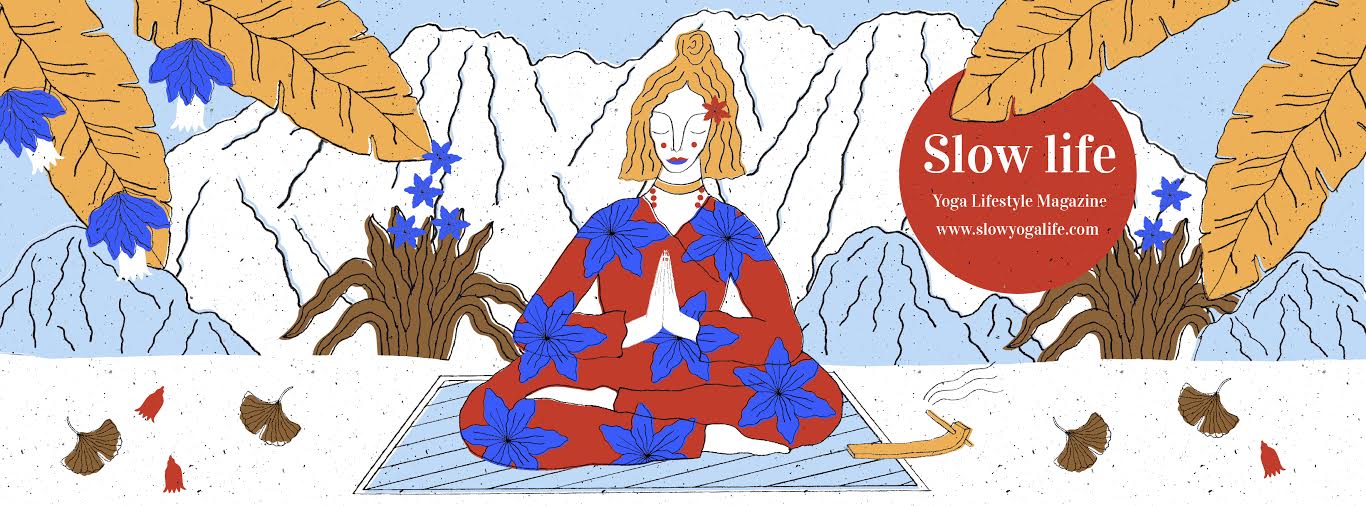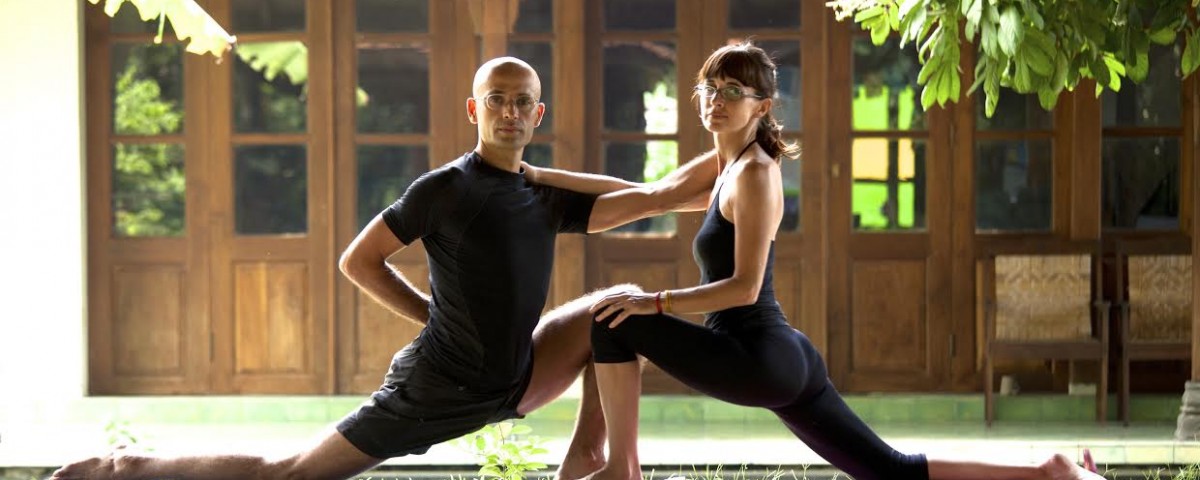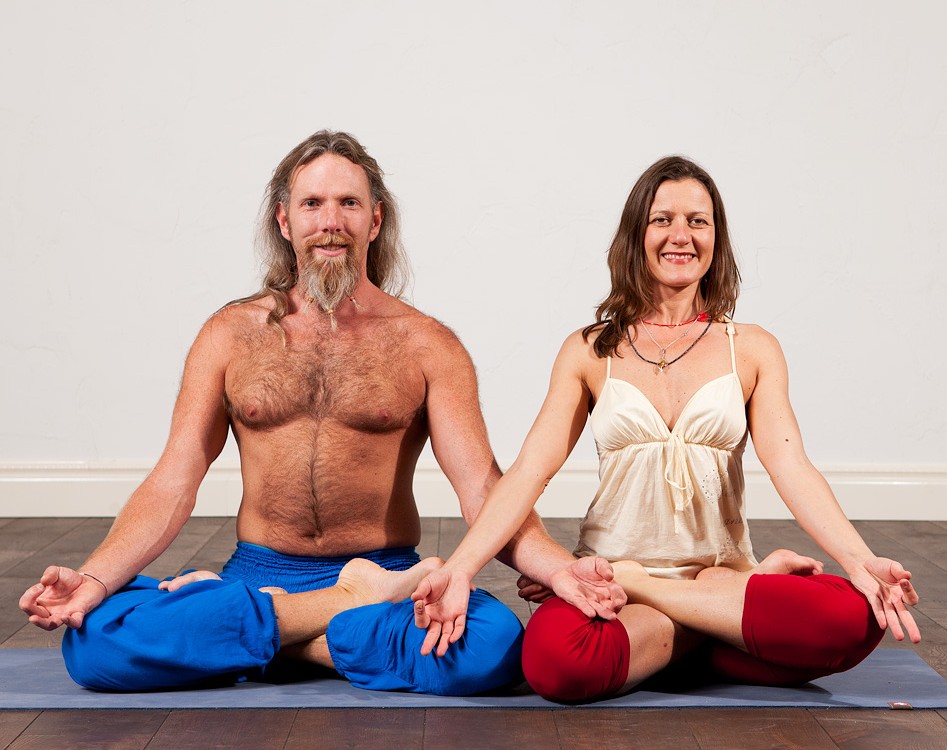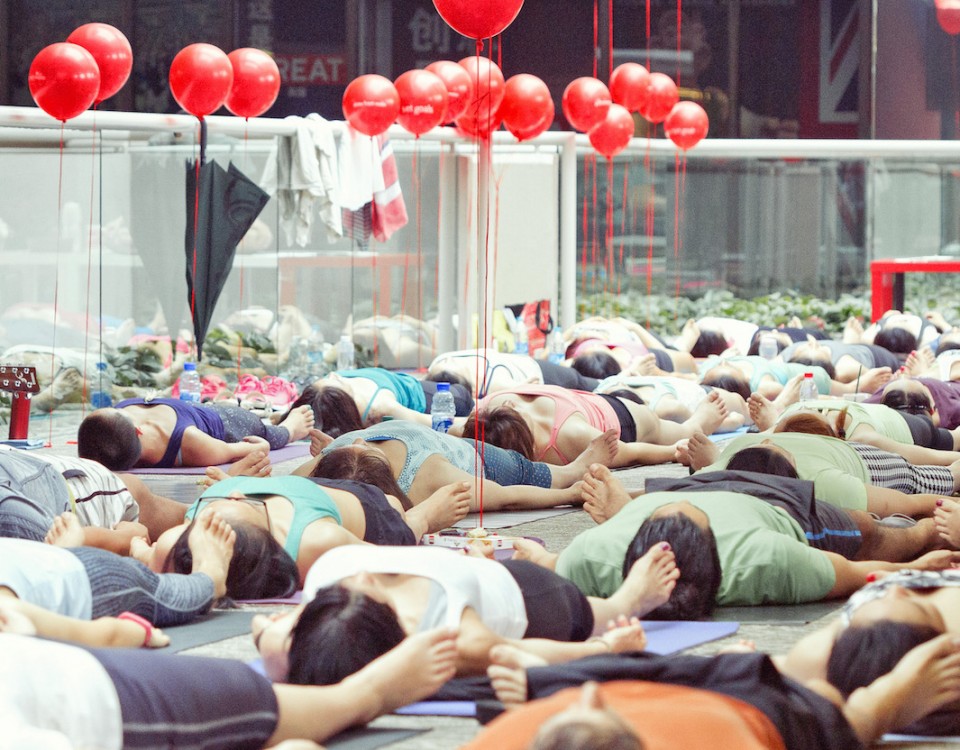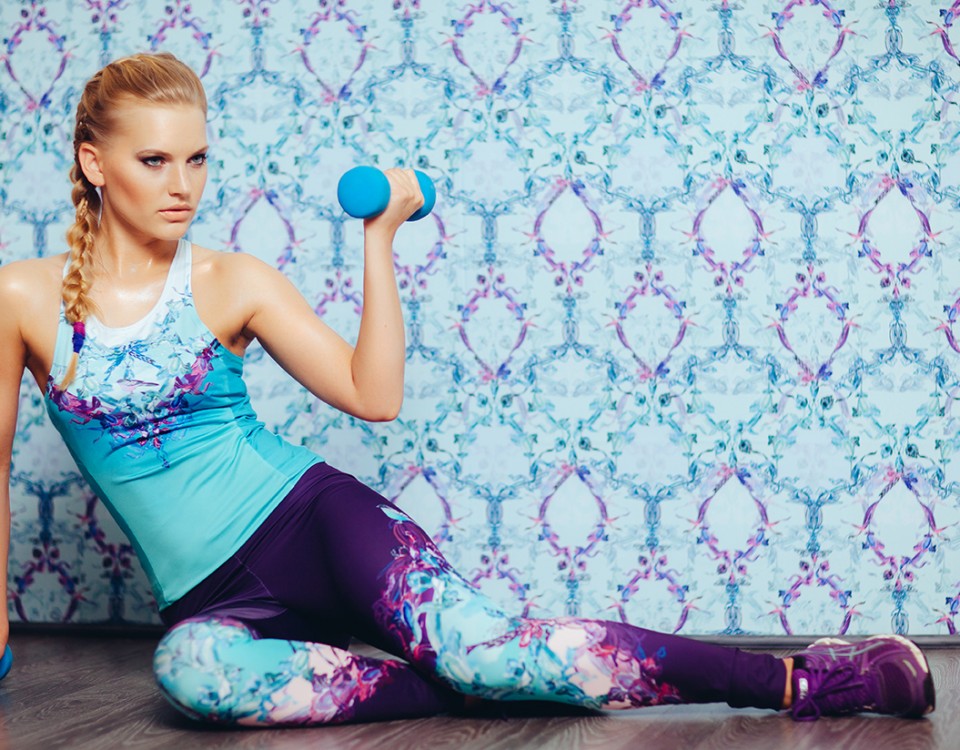Yin Yoga has been a part of my life for a little more than 1 year now and during this time I have discovered how close it is to the Tibetan Buddhism. Specifically the teachings of the mind that I feel so much connected with. This aspect of Yin Yoga was the main reason I decided to take a Yin Yoga teacher training with Sebastian and Murielle in Tallinn and I must say that this experience exceeded all of my expectations. I wish I could share this extraordinary experience with all of you but unfortunately this impossible. You will have to discover the beauty of Yin Yoga and Sebastian and Murielle’s passion and love for it all by yourself.
I had the opportunity during one of our lunch breaks to have a short chat with them to explore more about them and Yin Yoga.
How did you both discover Yin Yoga? Do you remember your first Yin Yoga class and what your feelings were? Was it love from the beginning?
Sebastian: The first time I came across yin yoga was in London, in 2006 with Sarah Powers. I did a workshop with her. That time I was very much into Ashtanga yoga practice and I have to say that I loved Yin Yoga from the very beginning. I found it very calming and soothing. I didn’t understand everything, also Sarah Powers was teaching differently at the time, but I thought it will be a good practice to do once in a blue moon time when you feel a little bit tired. The first impression was it would be good to have this practice between my Ashtanga practise. That was really the very first impression I had about yin yoga – nice, soothing practice to have once in a while. Later I started to become more involved, especially when i was looking to merge meditation into my Yoga practice.
Murrielle: For me the first experience with Yin Yoga was around the same time when Sebastian discovered it. He came back from that yin yoga workshop and was very enthusiastic. He said : “Oh, you should try it! You will love it because it goes so very well together with your personality, i think you will enjoy it.” But it wasn’t like that at all. We went for another workshop later and when we went there the room was full with people and there were only few places left at the very front of the room, just next to Sarah Powers. Despite the fact that I was doing some yoga at that time, the class wasn’t easy for me. I would say it was a real challenge, the slow pace made it painful and difficult for me at the time. Not only physically but also mentally, I really didn’t want to be there. And because I was at the front I couldn’t go away, I had to stay in the class but it was little bit like a torture for me. So I am afraid my first experience is – I didn’t like it! It happened gradually.
When did you start to love Yin Yoga?
Actually it was in 2009 when we really looked at develop more this practice we were already living in Asia at the time and Yin Yoga was not well known at all. At that time I realized the depth of this practice, the meaning of it and the benefits it can bring to our body and mind. I realized how good this practice makes me feel, that it allows me to meditate and contemplate and at that time I naturally fell in love with Yin Yoga, and I understood that this is something I want to teach.
Sebastian, you were practicing Ashtanga yoga very intensively, what do you think, why so many Ashtanga yogis turn to yin yoga after some time?
I think mainly because Ashtangis realize how yin yoga can complement the practice they are already doing. Ashtanga has been available from the late 70s and there are many teachers around now who have been practicing for a few decade. Probably now with the experience they come to the conclusion that a slower practice is enhancing what they already doing . Ashtanga is a great practice but if you compliment it together with Yin Yoga it becomes a much better practice, and vice & versa other form of vinyasa flow is needed for Yin aficionados.
What makes Yin Yoga so special that it can compliment other types of yoga and physical activities?
The pace, the rhythm and ability to slow down. Slowing down is the key. We live in a fast paced world and society where everybody is suffering because of this constant rush and fast pace in our lives. To realize first the need to slow down then to experience with the Yin practice the effect and impact on our body and psyche is such a blessing, Yin Yoga offer exactly what we need space and freedom it is extremely healing and comforting. Of course there are many benefits to elaborate from the Yin practice but I would say the first thing is the ability to slow down.
What is the main difference between Yin and Yang Yoga?
Well again i will say it is the rhythm, even in Yin Yoga there is a rhythm just much slower than in a more Yang style. But to be more specific we can summarize the practice of Yin by the 2 following statements, in Yin Yoga we stay longer in the pose (anything from 2 to 5 minutes usually in the class) and we keep the muscle relaxed.
Are there any contraindications or situations when you shouldn’t practice Yin Yoga?
Murielle: I would say Yin Yoga is a very open practice and there are no limitations. It is suitable for many different age groups. The only case might be for people who are hyper mobile. We live in Asia and there we meet many people who are already so open, so flexible, almost too flexible because of hyper extension in the joints. Sometimes for them, for their body what would be more beneficial would be to do more yang practices, to engage more muscular body and build up and strengthen their ability to contract and close the joints.
Sebastian: But here we are talking only about the physical aspect of the body. Yin yoga will bring all other great qualities like patience, contentment, ability to surrender and stillness. On the physical aspect it might not be advisable for people who are hyper mobile to have a regular Yin Yoga practice but from the psychological aspect there are many other great benefits to get out of the practice. So I would say it mainly depends on the practitioner’s approach to his or her yoga practice. If he or she is very deeply into the physical aspect of the yoga they will see only physical aspects of yin yoga and because they are already hyper mobile they will say –“Oh, yin yoga in not for me it doesn’t challenge me ” and they might be right but if they understand that it is just the first layer of Yoga not just Yin but all form of Hatha Yoga. Once you have a strong and flexible body move out of the physical aspect of your practice and Yin might just offer this.
I have noticed that strong yang styles of yoga can bring up strong emotions such as anger, pride and impatience…is the effect of Yin Yoga the opposite?
Sebastian: Well i am not sure if it is the style of Yoga itself which produce the emotions, the emotions are already in us and Yoga is just triggering them in a way or another regardless of what is your practice. Yin yoga really gives us the opportunity to look inside ourselves, as we withdraw it give us the ability to observe what is really unfolding, allowing us to understand a little bit more about who we are.
Murielle: Actually it is possible to bring up all kind of emotions also in Yin Yoga while we are targeting special areas or meridians in our bodies. It may bring up some anger or impatience but at the same time Yin Yoga gives you the opportunity to see it and notice it in order to work with that. Many different emotions may come up in Yin Yoga – anger, love, sadness, ect. Sometimes the things we cannot express openly come up during the yoga practice.
Sebastian: Every style of yoga should bring you a sense of calmness, tranquility and serenity. It is more about the attitude we have during the yoga practice, the way you approach the practice rather the style of the practice. The attitude we have during our practice it is what is lingering after with us once the practice is done.
And is it okay to mix all kinds of practices together?
Murielle: Yes, because there is no ultimate yin or ultimate yang practice. The ideal balance is to have a little bit of each in your life. Of course it depends on your everyday life also. If you are more introverted and a slow person maybe you need to do more of the yang practice but if you are very active during your life them yin yoga might be best for you. It is all very individual, you have to look at variables such as personality type, your activity level in your life such as profession and physical activity, your age group etc… Anything extreme is not good, also to much yin practice is not good. It can make you lethargic. But if you do to much yang practice you will exhaust yourself. Everybody needs a balance. Yin Yoga compliments yang and yang compliments yin, that’s why it is important to be balanced.
What to do with the emotions that arise in yoga practice?
Sebastian: It is important to understand that yoga is a tool not a remedy. A tool to discover who we are. By practicing yoga you get information that may trigger all those emotions which come to the surface. But yoga doesn’t give you the answer to get rid of those emotions or to emphasize them, this will depend on your psychology and your understanding of what is happening & why this is happening. There is not one straight answer to the question how to deal with emotions. What you can find in all traditions is the ability to observe rather than act. Whatever is coming, difficult emotions, traumas, dramas and thoughts, if you have the ability to observe what is happening, it means you are not identifying yourself with those emotions. As long you can observe something you are not that thing. When can’t observe an emotion or thought which is manifesting it means we are embodying this emotion or thought and then you have no choice but to react. When you can observe you can choose and this is the main thing. Yoga in itself is a fantastic tool for us to introspect and developing the witness. All emotions have a purpose, sometimes the situation demand to be upset joyful or sad, most important is to realize we are not this anger, sadness or joy emotions just like thought have a transient nature, trying to not identify ourselves with them is doing Yoga, observation gives us the freedom of choice.
Murielle: Yin yoga gives you so much time to establish this ability to become an observer, as all our emotions, thought arise, we usually out of habit engaging in it straight away not realizing we are already inside this emotion or thought. When we do Yin Yoga and we feel certain emotions coming to the surface one thing we can do is stay with our breath or sensation, and watch how it will manifest but not involved ourselves in the process. Just let it go without involvement and not let the emotion to take over and rule us. It is not easy of course but it is one of the goals of Yoga – to be able to surrender everything that happens in us, around us and with us. Rather than reacting we can just let everything pass.
Do you both do also some yang practices?
Sebastian: Yes, when we are in Asia I swim a lot, when we are in west I run and sometimes I do some Martial Art movements and work with kettle bell.
Sebastian: Do you still practice Ashtanga yoga?
No, not really. I like to practice Surya-Namaskar A&B sometimes.
Murielle: For me my yang practice is more walking and I do little bit of Dao movements.

Sebastian, during yoga class in our teacher training you led us through a dragon flow with the gecko kick. Where is this flow coming from?
Sebastian: Actually the Geko kick comes from the Japanese Martial art called Taido and what we did in the class is only one part of this move. After that you have to flip over. Instead of kicking up you flip all the way up turning you body over and come back on the hands.
All the sequence is coming from there or you put it together?
No, the sequence is coming from Suzee Grilley, Paul Grilley’s wife. She used to be a dancer and professionally taught dancing. She developed the sequences and later we added some movements I have learned in martial art to make it more personal. There is many videos on you tube you can watch inspired from it.
How many Yin Yoga teacher training levels are you offering now? And are you planning to offer more levels in the future?
Murielle: We have 3 levels now starting with Yin Yoga & Anatomy, then Yin Yoga with Daoism & TCM and Yin Yoga with Meditation & Philosophy we will in the future offer residential retreat for Yogis interested to go deeper with us.
If we have a committed daily meditation practice do we still need to do asanas?
Sebastian: I do believe as long as you have a body you need to look after it, Asana is a great way to remove stagnation and release tension, there is plenty of poses in the Yoga repertoire enable us to keep the spine flexible and the hips open. The mistake will be to think that there is a hierarchy from Yama to Samadhi, from my understanding they need to be practice simultaneously, to a lesser extent before reaching Nirvikalpa Samadhi of course! (Sebastian laughing).
You have been traveling to many European and Asian countries in order to teach Yin Yoga, have you noticed any differences in the way how people practice yoga in Europe and Asia?
Sebastian: No, not really. There is some slight difference in the genetic regarding flexibility and the way people naturally move, but Yogis either from the East or the West are all showing the same interest for the practice, theory and philosophy of Yoga. Some Yogis would be more attracted by either the technical aspect, and other more practical or philosophical aspect of the practice, but this is more about a personality type rather than cultural difference between countries.
What were your respective jobs prior to becoming yoga teachers?
Sebastian: Murielle was running a therapeutic center in the heart of London for many years, with a background in natural medicine and I was a therapist also teaching Yoga part time in London too. There we have met.
I know you are coming to Riga on 16 – 18th of October to do a Yin Yoga Anatomy Foundation Workshop. What will you do there?
On the Friday evening we have open class of yin and yang, and on the weekend we have the basics of the yin yoga practice – little bit of anatomy, the main principles and the poses. It is open to everyone not only for yoga teachers or yin practitioners. Everyone is welcome. More information on the workshop you can find here:http://with-yinyoga.com/event/yin-yoga-anatomy-foundation-workshop-16-17-18-of-october-2015-at-labu-sajutu-laboratorija-riga-latvia/
Thank you very much for your time and inspiration!
Sebastian and Murielle: Thank you very Much Tina, we are delighted to have met you and being able to share our teaching with dedicated Yogis such as you. We hope to meet you again next year.
